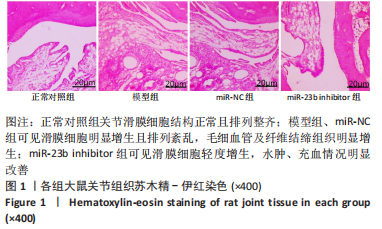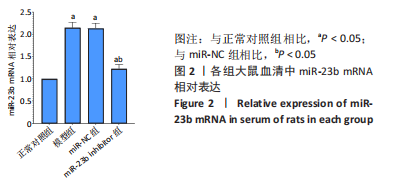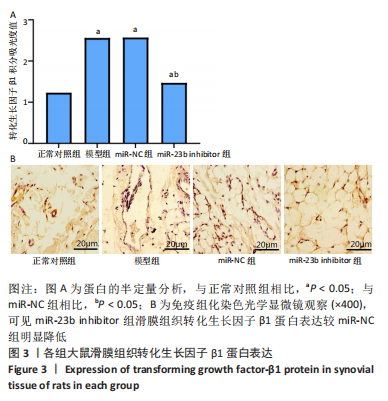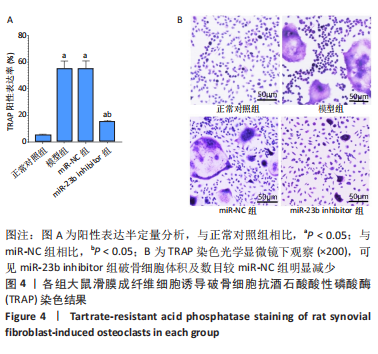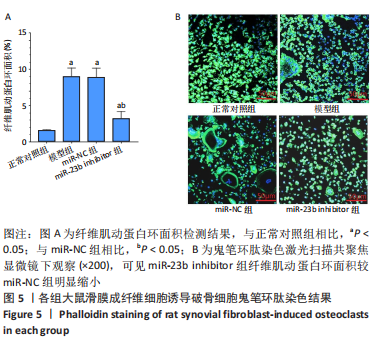[1] TATANGELO M, TOMLINSON G, PATERSON JM, et al. Health care costs of rheumatoid arthritis: A longitudinal population study. PLoS One. 2021;16(5):e0251334.
[2] 商玮, 徐子涵, 郭郡浩,等. 姜黄素对类风湿关节炎破骨细胞分化中NF-κB p65和NFATc1表达的影响[J]. 中国骨质疏松杂志,2018, 24(4):52-57.
[3] ZHANG J, LI C, ZHENG Y, et al. Inhibition of angiogenesis by arsenic trioxide via TSP-1–TGF-β1-CTGF–VEGF functional module in rheumatoid arthritis. Oncotarget. 2017;8(43):73529-73546.
[4] 龙瑞文, 周烨, 吕蔚然,等. 类风湿关节炎患者外周血miR-146a、miR-155、Ets-1以及IRAK1的表达及临床意义[J]. 现代免疫学, 2017,37(2):115-120.
[5] ZHU S, PAN W, SONG X, et al. The microRNA miR-23b suppresses IL-17-associated autoimmune inflammation by targeting TAB2, TAB3 and IKK-α. Nat Med. 2012;18(7):1077.
[6] 邓媛, 陈勇, 陈振云,等. 雷公藤对类风湿关节炎疗效及IgA,IgG,RF变化研究[J]. 中华中医药学刊,2020,38(2):242-244.
[7] XIAO J, WANG R, ZHOU W, et al. LncRNA NEAT1 regulates the proliferation and production of the inflammatory cytokines in rheumatoid arthritis fibroblast-like synoviocytes by targeting miR-204-5p. Human Cell. 2021;34(2):372-382.
[8] 杨明义, 苏亚妮, 许珂,等. MiR-103a-3p与miR-107:骨关节炎进展过程中的潜在生物标志物[J]. 中华风湿病学杂志,2021,25(9): 616-621.
[9] 韩浩博. 树枝状高分子PAMAM衍生物介导miR-23b递送治疗肿瘤和类风湿性关节炎的研究[D]. 长春:吉林大学,2020.
[10] ANITA C, MUNIRA M, MURAL Q, et al. Topical nanocarriers for management of Rheumatoid Arthritis: A review. Biomed Pharmacother. 2021;141(1):111880.
[11] 刘茜. microRNA-23b在类风湿关节炎患者血浆中的表达及其临床意义[D]. 苏州:苏州大学,2018.
[12] WANG Y, LI G, GUO W, et al. LncRNA PlncRNA-1 participates in rheumatoid arthritis by regulating transforming growth factor β1. Autoimmunity. 2020;53(6):297-302.
[13] 牟晓月, 张幽幽, 陶海英,等. 类风湿关节炎外周Foxp3、 TGF-β1与动脉粥样硬化的关系[J]. 医学研究杂志,2019,48(6):105-108.
[14] LOPES FHA, FREITAS MVC, DE BRUIN VMS, et al. Depressive symptoms are associated with impaired sleep, fatigue, and disease activity in women with rheumatoid arthritis. Adv Rheumatol. 2021;61(1):18-23.
[15] CHEN M, SHI J, ZHANG W, et al. miR-23b controls TGF-β1 induced airway smooth muscle cell proliferation via direct targeting of Smad3. Pulm Pharmacol Ther. 2017;42:33-42.
[16] 刘欢, 李浪. 类风湿关节炎患者血清肿瘤坏死因子-α,转化生长因子-β1水平与疾病活动指数的相关性[J]. 临床医学研究与实践, 2020,5(19):90-91.
[17] 吴玉寒, 陈勇. 类风湿关节炎破骨细胞的活化机制及其预测指标[J]. 生命的化学,2020,40(3):378-383.
[18] 徐子涵, 商玮, 蔡辉. 破骨细胞在类风湿关节炎骨侵蚀中的研究进展[J]. 现代医学,2017,45(3):446-450.
[19] PANDEY AK, SAXENA A, DEY SK, et al. Correlation between an intronic SNP genotype and ARL15 level in rheumatoid arthritis. J Genet. 2021; 100:26.
[20] 冯佳, 龚书识, 夏燕,等. 艾拉莫德对类风湿关节炎外周血破骨细胞分化及破骨细胞相关基因表达的影响[J]. 中国骨质疏松杂志, 2019,25(1):97-102.
|

